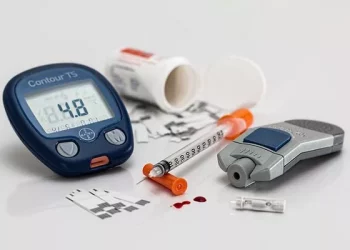For individuals with diabetes, making informed dietary choices is crucial for maintaining stable blood sugar levels and overall health. Among the wide variety of fruits available, apples are a popular choice. However, not all apple varieties are created equal when it comes to their suitability for diabetics. This article aims to explore the nutritional profiles and blood – sugar – related impacts of different apple types to determine which ones are the best options for those managing diabetes.
Which Apple Is Best for Diabetics?
Nutritional Landscape of Apples
Macronutrients
Apples are a rich source of several macronutrients. A medium – sized apple, weighing approximately 182 grams, contains around 25 grams of carbohydrates. The majority of these carbohydrates are sugars, including fructose, glucose, and sucrose, with a total sugar content of about 19 grams. Apples also provide a modest amount of dietary fiber, around 4.4 grams per medium apple. This fiber plays a crucial role in digestion and blood – sugar regulation. In terms of protein and fat, apples are relatively low, with less than 1 gram of protein and 0.3 grams of fat per medium – sized fruit, making them a low – calorie and low – fat food option.
Micronutrients
Apples are packed with essential micronutrients. They are a good source of vitamin C, providing about 10 – 14% of the daily recommended intake per medium apple. Vitamin C is an antioxidant that helps boost the immune system, protect cells from damage, and aids in collagen synthesis. Apples also contain small amounts of other vitamins such as vitamin K, which is important for blood clotting and bone health, and B – vitamins, which are involved in various metabolic processes. Additionally, apples are a source of minerals like potassium, which helps regulate blood pressure, and manganese, which is essential for bone development and wound healing.
Apples and Blood Sugar Regulation
Glycemic Index and Glycemic Load
The glycemic index (GI) and glycemic load (GL) are important factors to consider when evaluating how apples affect blood sugar levels. The GI of apples typically ranges from 38 – 58, depending on the variety, ripeness, and how they are prepared. For example, a Granny Smith apple, which is relatively tart and firm, often has a lower GI, around 38, while a Red Delicious apple may have a slightly higher GI, around 54. The glycemic load, which takes into account both the GI and the amount of carbohydrates in a serving, is also relatively low for apples. A medium – sized apple has a GL of around 6 – 8, indicating that it causes a slow and steady rise in blood glucose levels, making it a suitable fruit choice for diabetics when consumed in moderation.
Fiber’s Role in Blood Sugar Control
The dietary fiber in apples, particularly pectin, is a key component in blood – sugar regulation. Pectin is a type of soluble fiber that forms a gel – like substance in the digestive tract. This gel slows down the digestion and absorption of carbohydrates, preventing a rapid influx of glucose into the bloodstream. As a result, the release of glucose from apples into the body is more gradual, allowing the pancreas to secrete insulin in a more controlled manner and helping to maintain stable blood sugar levels.
Different Apple Varieties and Their Suitability for Diabetics
Granny Smith
Granny Smith apples are known for their tart flavor and firm texture. They have a relatively low GI, which makes them an excellent choice for diabetics. The high fiber content in Granny Smith apples, combined with their lower sugar content compared to some other varieties, further aids in blood – sugar control. Additionally, their tartness can be a refreshing alternative for those who may be looking to reduce their overall sugar intake.
Honeycrisp
Honeycrisp apples are popular for their sweet and juicy flavor. While they are sweeter than Granny Smith apples, they still have a moderate GI and GL. The combination of their pleasant taste and nutritional benefits, including fiber and various vitamins and minerals, makes them a viable option for diabetics when consumed as part of a balanced diet. However, due to their sweetness, portion control is important to avoid overconsumption of sugars.
Fuji
Fuji apples are another sweet variety. They have a slightly higher GI compared to Granny Smith apples but still offer a good amount of fiber and nutrients. Fuji apples are rich in antioxidants, which can help combat oxidative stress associated with diabetes. Diabetics can enjoy Fuji apples in moderation, being mindful of their overall carbohydrate and sugar intake for the day.
Gala
Gala apples are smaller in size and have a mild, sweet flavor. They have a relatively low to moderate GI, making them suitable for diabetics. Their smaller size can also be an advantage, as it makes it easier to control portion sizes. Gala apples are a convenient option for a quick snack and provide a good dose of vitamins and fiber.
Other Health Benefits of Apples for Diabetics
Cardiovascular Health
Apples contain antioxidants, such as flavonoids and polyphenols, which have been linked to improved cardiovascular health. These antioxidants help reduce inflammation, lower cholesterol levels, and prevent the oxidation of LDL cholesterol, also known as “bad” cholesterol. For diabetics, who are at an increased risk of heart disease, including apples in their diet can contribute to better heart health by reducing these risk factors.
Digestive Health
The fiber in apples not only aids in blood – sugar control but also promotes good digestive health. It adds bulk to the stool, facilitating regular bowel movements and preventing constipation. A healthy digestive system is important for overall well – being and can also indirectly impact blood – sugar regulation, as proper digestion affects the absorption of nutrients.
Factors to Consider When Choosing Apples as a Diabetic
Ripeness
The ripeness of an apple can affect its sugar content and GI. Generally, as apples ripen, their sugar content increases, and the GI may also rise slightly. Diabetics may want to choose apples that are slightly underripe or at the peak of ripeness rather than overly ripe to keep sugar intake in check. However, personal taste preferences also play a role, and some may prefer the sweeter taste of a ripe apple, in which case portion control becomes even more crucial.
Preparation
How apples are prepared can also impact their effect on blood sugar. Eating an apple raw with the skin on maximizes the fiber content, which is beneficial for blood – sugar regulation. On the other hand, cooking apples, especially with added sugars or syrups, can increase their calorie and carbohydrate content. Baked apples with toppings like brown sugar or caramel should be avoided or consumed very sparingly by diabetics. Apple juice, even if it’s 100% natural, is high in sugar and low in fiber compared to whole apples, so it’s best to limit its consumption.
Overall Dietary Balance
Apples should be considered within the context of the overall diabetic diet. If a diabetic’s meal plan already includes other carbohydrate – rich foods, they need to account for the carbohydrates in apples. For example, if they are having a serving of whole grains and a piece of fruit, they may need to adjust the portion sizes of each to stay within their daily carbohydrate allowance. It’s important to balance apple consumption with other nutrient – dense foods such as lean proteins, vegetables, and healthy fats.
Conclusion
Many apple varieties can fit into a diabetic’s diet. Granny Smith apples stand out for their low GI and high fiber, making them optimal for blood – sugar control. Other varieties like Honeycrisp, Fuji, and Gala are also suitable when eaten in moderation, thanks to their moderate GI, GL, and nutritional benefits. Diabetics should consider apple ripeness, preparation methods, and overall dietary balance when consuming apples. Moreover, low – glycemic fruits and vegetables can serve as alternatives. By making informed choices, diabetics can enjoy apples while effectively managing blood sugar and maintaining health.
























